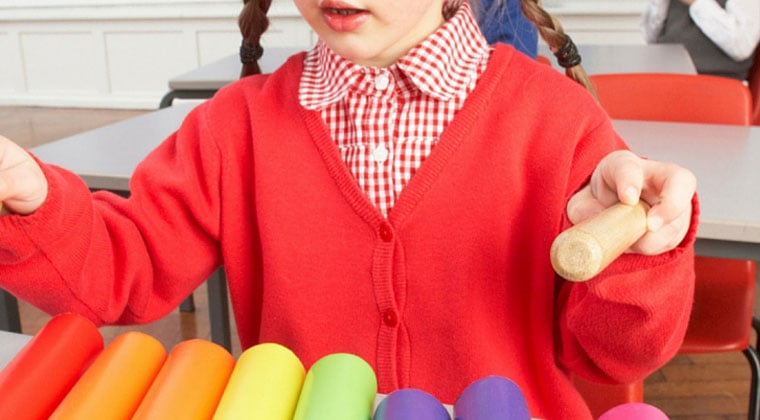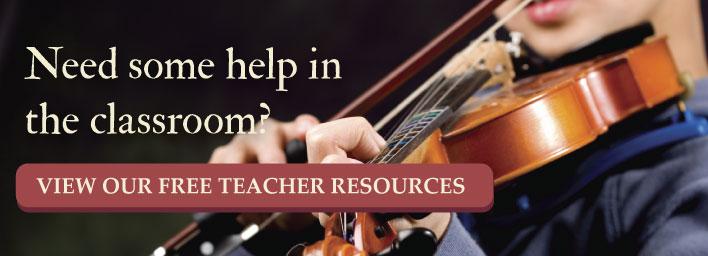How to Help Students with ADD Concentrate on Music Lessons

 As a music educator, you know that all of your students exhibit different learning styles and respond to teaching techniques in different ways. And while this requires you to develop various stratagems for imparting your knowledge and maintaining your students’ interest in their music lessons, you know that training curriculum that includes variety and spontaneity is in general, an excellent way to reach your kids. However, children who’ve been diagnosed with ADD/ADHD have specific learning needs that are often in conflict with that concept.
As a music educator, you know that all of your students exhibit different learning styles and respond to teaching techniques in different ways. And while this requires you to develop various stratagems for imparting your knowledge and maintaining your students’ interest in their music lessons, you know that training curriculum that includes variety and spontaneity is in general, an excellent way to reach your kids. However, children who’ve been diagnosed with ADD/ADHD have specific learning needs that are often in conflict with that concept.
Therefore, developing effective classroom techniques that will help all of your students succeed, including those with ADD or ADHD, can be a challenge. You have to create a balance that will not only reinforce your previous instructions and lay a foundation for future development, but also provide the natural stimulation that your other students crave. These suggestions can help you adapt your teaching approach, allowing you to help students concentrate on their tasks. And although they may be incorporated into a group setting, they also work wonders if you conduct private lessons with students who’ve been diagnosed with ADD/ADHD.
Understanding Behaviors
The behaviors identified with ADD and ADHD are generally associated with concentration difficulties. This can make it a challenge for learning music. However, research has determined that these difficulties manifest themselves in a variety of specific behaviors, relative to age. For example, very young children often display excessive over-activity such as fidgeting, squirming and restlessness, while older adolescents might typically demonstrate problems following through on assignments, lack of attention, and interruptions.
Understanding the behaviors of students with ADD and ADHD is the first step for developing an effective teaching strategy to help them concentrate on their music lessons. The second step encompasses the learning techniques that overcome these behavioral challenges and support students who have trouble concentrating.
Instructional Practices
Basically, you’ll need to incorporate teaching styles that will both conform to the educational requirements outlined for your class and hold the attention of students with ADD or ADHD. If you are working with individual students, this will be easier because you can adapt your lessons accordingly.
Students with ADD/ADHD need structure. Music lessons should follow the same pattern, and before you begin, you should outline the expectations of the current lesson while explaining how it builds on the previous ones. When introducing the lesson for the day, educators should follow these best practices:
- Overview: Prepare students by providing a brief summary of the expected activities (and your expectations concerning the students’ behavior).
- Review: Remind the students about the previous lesson and correlate it to the new information you’ll be covering in this lesson.
- Simplify: Use basic, brief communications. Students with ADD/ADHD perform better when tasks are outline simply, and performed with repetition.
Now that your students know what to expect and what is expected of them, you can use these strategies for conducting your music lessons:
- Be Consistent—structure is imperative for maintaining concentration, so follow predictable methods of teaching. For example, you can tailor your lesson plan to cover the same general topics each day, depending on the age and ability of your students. Moreover, you can structure those plans to incorporate activities that will support your pupils’ strengths.
- Develop Signals—avoid making distinctions in class between student behaviors, but you can create personal hand signals or other cues (privately with the students) that will help them stay focused and curtail interruptive behavior. Namely, use gestures to indicate when you will be calling on the student to perform next, or to bring attention to back to the task.
- Orchestrate Ways to Focus—Assign partner tasks (to employ cooperative learning strategies) or break down pieces of music into smaller bars and measures so that the student doesn’t feel overwhelmed by the enormity of the piece. Small, manageable tasks enable learning by establishing the way to reach an attainable goal.
- Highlight Difficult or Important Parts—While teaching, prepare your students for a particularly difficult note/rhythm combination by covering the essential aspects beforehand, and then significantly reducing the tempo.
- Individualize—All students have their own learning preferences with specific methods that work best for them. With music, you have the opportunity to incorporate more kinesthetic styles, especially if you are teaching an instrument. Use that advantage to structure a learning environment that meets specific needs.
By making changes to your methods of participation and lesson delivery styles, you can accommodate your special needs pupils by creating an environment that helps music students with ADD stay focused and motivated to learn.

